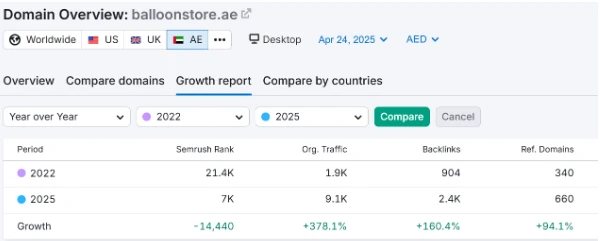1 JPY to USD Japanese Yen to US Dollars Exchange Rate
- digitalmanqoosh
- August 30, 2021
- Uncategorized
- 0 Comments
Importance of the Japanese Yen
The Japanese Yen is the third most traded currency in the world, and the most heavily traded currency in Asia. Due to its relatively low interest rates, the Japanese Yen is often used in carry trades with the Australian Dollar and the US Dollar. A carry trade is a strategy in which a currency with low interest rate is sold in order to buy a currency with a higher interest rate. Our currency rankings show that the most popular Japanese Yen exchange rate is the JPY to USD rate. The currency code for Yen is JPY, and the currency symbol is ¥. Below, you’ll find Japanese Yen rates and a currency converter.
Live tracking and notifications + flexible delivery and payment options.
The demand for the yen is governed by the desire of foreigners to buy goods and services in Japan and by their interest in investing in Japan (buying yen-denominated real and financial assets). With inflation continuing to stay well above the central bank’s target, it could be a matter of time before BOJ removes its foot off the ultra-loose monetary pedal. Data released earlier Friday showed Japan’s core inflation rose to 3.1% on-year in August, higher than the 3.0% expected, staying above BOJ’s 2% target.
In our money guide, we outline the basics of using Japanese yen (¥, JPY), including denominations, exchange rates, and payment methods. World War II destroyed the value of the yen, and U.S. occupation authorities after the war imposed a complex web of regulated exchange rates while steadily depreciating the yen against the dollar amid rapid inflation. The yen’s value was pegged to the dollar in 1949 but allowed to float in 1973 following the collapse of the Bretton Woods system of fixed currency exchange rates. Japan’s current account surplus stemming from its role as a major net exporter limits the accumulation of yen by foreign central banks. Following the United States’ measures to devalue the dollar in the summer of 1971, the Japanese government agreed to a new, fixed exchange rate as part of the Smithsonian Agreement, signed at the end of the year.
- Data released earlier Friday showed Japan’s core inflation rose to 3.1% on-year in August, higher than the 3.0% expected, staying above BOJ’s 2% target.
- In the years after the Great Recession, the yen slowly depreciated against the U.S. dollar as the global economy recovered.
- The government later established a unified monetary system that consisted of gold currency, as well as silver and copper coins.
- The mintage period for five rin coins was brief as they were discontinued after only four years of production due to their sharp decline in monetary value.
- These currency charts use live mid-market rates, are easy to use, and are very reliable.
By 1920, this included cupro-nickel 10 sen and reduced-size silver 50 sen coins. Production of latter ceased in 1938, after which a variety of base metals were used to produce 1, 5 and 10 sen coins during the Second World War. While clay 5 and 10 sen coins were produced in 1945, they were not issued for circulation. As with the Rin, coins in denominations of less than 1 yen became invalid at the end of 1953 and were demonetized due to inflation. Banks often advertise free or low-cost transfers, but add a hidden markup to the exchange rate.
Asian markets dip ahead of Fed decision on interest rates
The overall demand for subsidiary coinage ended as Japan slipped into a post-war recession. Coins worth 1 and 5 rin were eventually officially taken out of circulation at the end of 1953 and demonetized. The Japanese central bank was widely expected to keep its policy settings unchanged at the two-day meeting as policymakers wait for more evidence of sustained price pressures. Markets are now focusing on Governor Kazuo Ueda’s briefing for any cues on the timing of the policy shift. In a recent interview, Ueda said the central bank would have enough information and data by the year-end on prices to assess whether to end negative rates, raising speculation of an early exit from current policy settings. This post has everything you need to know about converting Japanese yen to U.S. dollars including where to secure the best exchange rates and how to avoid paying high fees on your conversion.
Slippage is the difference between the price needed by the trader and the real price the trader was executed. If you need to transfer funds to a local account or to have convenient access sin stocks to currency during your trip, Wise (formerly TransferWise) allows you to do so — economically, quickly and easily. If you have a Japanese phone number, apps like PayPay may be an option.
- Broader appeal for the US Dollar is still bullish as the United States economy is resilient due to declining inflation, stable labor growth and robust consumer spending.
- The currency pair shows how many Japanese yen (the quote currency) are needed to purchase one U.S. dollar (the base currency).
- The issuance of yen banknotes began in 1872, two years after the currency was introduced.
The issuance of yen banknotes began in 1872, two years after the currency was introduced. Denominations have ranged from 1 yen to 10,000 yen; since 1984, the lowest-valued banknote is the 1,000 yen note. Before and during World War II, various bodies issued banknotes in yen, such as the Ministry of Finance and the Imperial Japanese National Bank. The Allied forces also issued some notes shortly after the war.
Janet Yellen says she expects soaring oil prices to stabilize
On April 4, 2013, the Bank of Japan announced that they would expand their asset purchase program by $1.4 trillion in two years. The Bank of Japan hopes to bring Japan from deflation to inflation, aiming for 2% inflation. Normally, the EUR/USD is very quiet during the Asian session because economic data that affects the fundamentals of those currencies is released in either the European or U.S. session. Once traders in Europe get to their desks a flurry of activity hits the tape as they start filling customer orders and jockey for positions. At noon activity slows down as traders step out for lunch and then picks back up again as the U.S. comes online. Central banks’ imbalances played a big role in the matter, with the US Federal Reserve adopting aggressive tightening in March 2022 and the Bank of Japan holding on to its ultra-loose monetary policy.
JPY To USD Convert Japanese Yen To United States Dollar
USD/JPY is extending gains toward 150.00, flirting with fresh 11-month highs in Asian trading on Monday. The pair is supported by the renewed upswing in the US Treasury bond yields and dovish BoJ commentary. Data are provided ‘as is’ for informational purposes only and are not intended for trading purposes. what is low liquidity Data may be intentionally delayed pursuant to supplier requirements. Keep in mind that exchanging currency often comes with added fees that a conversion calculator won’t be able to predict. For instance, credit card companies and ATM networks usually charge a 1% conversion fee on all foreign transactions.
United States Dollar
When such investment flows reverse in times of market stress, the yen has tended to gain on the U.S. dollar. The Modern Day Japanese Yen
By the 19th century, Spanish Dollars were being used in Japan, along with local currencies. In order to simplify and centralize the different coins being used at the time, the Yen (which means ‘circle’ or ’round object’) was created in 1871.
Real Time News
Since exchange rates fluctuate on a daily basis, using a calculator can ensure your math is correct. You can send a variety of international currencies to multiple countries reliably, quickly, and safely, and at a rate cheaper than most banks. They add hidden markups to their exchange rates – charging you more without your knowledge. In 1897, the silver 1 yen coin was demonetized and the sizes of the gold coins were reduced by 50%, with 5, 10 and 20 yen coins issued. USDJPY is the abbreviation for the currency pair US dollar against the Japanese yen.
One rin coins were very small measuring 15.75 mm in diameter, and co-circulated with mon coins of the old currency system. Their small size eventually was their undoing as the rin was abandoned in 1884 due to unpopularity. Five rin coins worth one-two hundredth of a yen also used a bronze alloy. These were successor coins to the equally valued half sen coin which had been previously minted until 1888. The decision to bring back an equally valued coin was in response to rising inflation caused by World War I which led to an overall shortage of subsidiary coins. The mintage period for five rin coins was brief as they were discontinued after only four years of production due to their sharp decline in monetary value.
It’s a digital payment app than can be topped up at ATMs or via a connected bank account, credit card or mobile service provider. Payments can be made via contactless terminals or scanning a vendor’s PayPay QR code and confirming the transaction details with the vendor. The Japanese Yen’s strength from the last quarter of 2022 has found an interim bottom at the beginning of the new year. 2023 is set to be a challenger year for the USD/JPY currency pair. Oil (WTI) heads higher on Monday, halting the sell-off at the end of last week.
He further added, the authority is closely watching FX moves with sense of urgency. An easy-to-use and reliable international money transfer solution for businesses. In contrast, yen ETFs offer no leverage, investing in yen-backed assets such as short-term debt and bonds. Though holding yen ETFs does expose one to potentially damaging currency risk.
JPY – Japanese Yen
The new 1,000 yen note will honor the medical scientist Shibasaburo Kitasato. Series E banknotes were introduced in 2004 in ¥1000, ¥5000, and ¥10,000 denominations. All places with an como funciona bitcoins “Authorized Foreign Exchange” sign can exchange currencies; these places include banks and money changers (such as Travelex), which can be located at airports and in major cities.
The interest rate differential between the policy rates of the Federal Reserve and the Bank of Japan (BoJ) is an important influence on the USD/JPY exchange rate. Higher interest rates make a currency relatively more attractive because they allow owners of assets denominated in that currency to earn a higher yield. For a general idea of what current exchange rates are like, check out XE Currency Converter or Wise’s own Currency Converter. Using a currency conversion calculator is often the easiest way to get an estimate when you’re converting currency.










